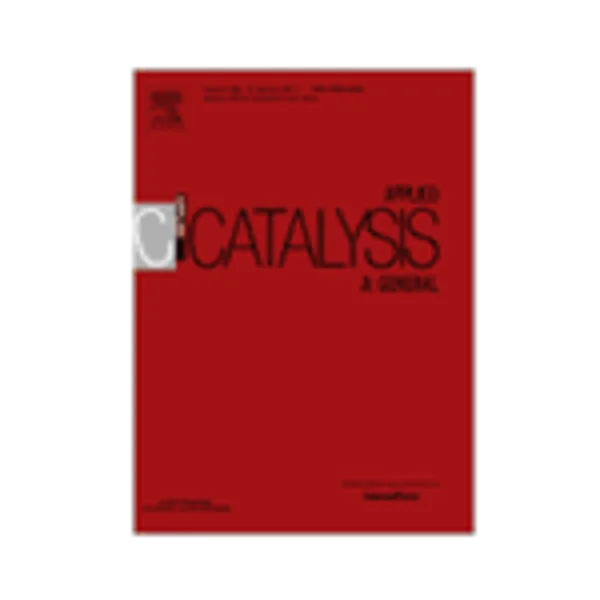-
comparative study on uv and visible light sensitive bare and doped titanium dioxide photocatalysts for the decomposition of environmental pollutants in water
جزئیات بیشتر مقاله- تاریخ ارائه: 1392/07/24
- تاریخ انتشار در تی پی بین: 1392/07/24
- تعداد بازدید: 1056
- تعداد پرسش و پاسخ ها: 0
- شماره تماس دبیرخانه رویداد: -
in this study the efficiency of different bare, doped and composite photocatalysts were compared, under uv and visible light irradiation in order to show a detailed picture of the relative performance of the best photocatalysts developed in our laboratories and the mostly investigated reference titanias. the syntheses of our photocatalysts were optimized in order to achieve maximum photocatalytic activity under uv and visible light irradiation. non doped commercial (aeroxide p25, aldrich anatase) and synthesized titanias (produced by sol–gel and flame hydrolysis techniques) and nitrogen, iron, iodine doped and silver or gold deposited titanium dioxides were investigated with two model pollutants (phenol and oxalic acid) under identical experimental conditions. the material properties of these selected photocatalysts were thoroughly characterized by x-ray diffraction, diffuse reflectance spectroscopy, transmission electron microscopy, x-ray photoelectron spectroscopy, x-ray fluorescence spectroscopy and bet methods. the highest degradation rate of phenol was determined for the flame made titania sample with relatively low specific surface area (20 m2/g) when uv irradiation was applied. in contrast with that, our nitrogen doped photocatalyst with high specific surface area (139 m2/g) was the best for phenol degradation under visible light irradiation. although the most efficient oxalic acid mineralization occurred with noble metal photodeposited samples under uv irradiation, this type of modification was detrimental when vis irradiation is applied. the decomposition rate of oxalic acid was high under vis irradiation using the iron and nitrogen doped photocatalysts. for both substrates and irradiation conditions our best photocatalysts were found to be significantly more active than aeroxide p25 tio2. intermediate studies revealed that phenol degradation resulted in dihydroxy benzene intermediates, such as pyrocatechol and hydroquinone both under uv and visible light irradiation with our tio2-n photocatalyst. the results of this comparative study could promote the determination of the optimal synthesis conditions of titanium dioxide based photocatalysts for a given organic pollutant in water.
مقالات جدیدترین رویدادها
-
استفاده از تحلیل اهمیت-عملکرد در ارائه الگوی مدیریت خلاقیت سازمانی و ارائه راهکار جهت بهبود
-
بررسی تاثیر ارزش وجوه نقد مازاد بر ساختار سرمایه شرکت های پذیرفته شده در بورس اوراق بهادار تهران
-
بررسی تأثیر سطح افشای ریسک بر قرارداد بدهی شرکت های پذیرفته شده در بورس اوراق بهادار تهران
-
بررسی تأثیر رتبه بندی اعتباری مبتنی بر مدل امتیاز بازار نوظهور بر نقد شوندگی سهام با تأکید بر خصوصی سازی شرکت ها
-
تأثیر آمیخته بازاریابی پوشاک ایرانی بر تصویر ذهنی مشتری پوشاک ایرانی (هاکوپیان)
-
بررسی رفتار لرزه ای غیر خطی قاب های با بادبند زانویی به روش دینامیکی فزاینده
-
بررسی میزان سواد رسانه ای بر خلاقیت در تدریس معلمان ابتدایی شهرستان میاندوآب در سال تحصیلی 99 - 1400
-
بررسی رابطه میزان استفاده از اینترنت با اعتماد به نفس دانش آموزان دختر مقطع متوسطه دوم شهر دهدشت
-
طراحی فیبرهای جبران ساز پاشش مبتنی بر فیبرهای تک مد مورد استفاده در شبکه های فیبر نوری
-
بررسی میزان موفقیت مدیران مدارس متوسطه شهر تربت حیدریه در برقراری روابط انسانی
مقالات جدیدترین ژورنال ها
-
مدیریت و بررسی افسردگی دانش آموزان دختر مقطع متوسطه دوم در دروان کرونا در شهرستان دزفول
-
مدیریت و بررسی خرد سیاسی در اندیشه ی فردوسی در ادب ایران
-
واکاوی و مدیریت توصیفی قلمدان(جاکلیدی)ضریح در موزه آستان قدس رضوی
-
بررسی تاثیر خلاقیت، دانش و انگیزه کارکنان بر پیشنهادات نوآورانه کارکنان ( مورد مطالعه: هتل های 3 و 4 ستاره استان کرمان)
-
بررسی تاثیر کیفیت سیستم های اطلاعاتی بر تصمیم گیری موفق در شرکتهای تولیدی استان اصفهان (مورد مطالعه: مدیران شرکتهای تولیدی استان اصفهان)
-
مسائل حقوقی مالکیت زمین های مسکن مهر
-
بررسی نوسانات نرخ ارز بر شاخص های اقتصاد و سازوکار مدیریت آن
-
طراحی الگوی جذب و نگهداری مشتریان وفادار بر مبنای مسئولیت های اجتماعی در بخش صنایع پوشاک (مورد مطالعه فروشگاه های هاکوپیان)
-
بررسی اثر بخشی آموزش ذهن آگاهی بر انعطاف پذیری شناختی و رضایت زناشویی زوجین سازگار دانشگاه آزاد اسلامی واحد تهران جنوب
-
selective separation and preconcentration of trace amounts of gallium in water and rice samples using cloud point extraction and determination by inductively coupled plasma-atomic emission spectrometry




سوال خود را در مورد این مقاله مطرح نمایید :